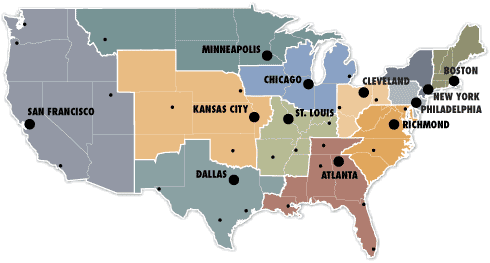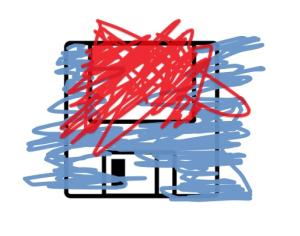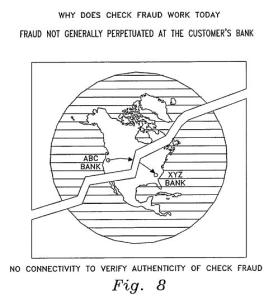SmartGene v. Advanced Biological Laboratories
By Jason Rantanen
Earlier this month, I posed a question relating to the patent eligibility of the following claim:
- A method for guiding the selection of a therapeutic treatment regimen for a patient with a known disease or medical condition, said method comprising:
(a) providing patient information to a computing device comprising:
a first knowledge base comprising a plurality of different therapeutic treatment regimens for said disease or medical condition;
a second knowledge base comprising a plurality of expert rules for evaluating and selecting a therapeutic treatment regimen for said disease or medical condition;
a third knowledge base comprising advisory information useful for the treatment of a patient with different constituents of said different therapeutic treatment regimens; and
(b) generating in said computing device a ranked listing of available therapeutic treatment regimens for said patient; and
(c) generating in said computing device advisory information for one or more therapeutic treatment regimens in said ranked listing based on said patient information and said expert rules.
This claim was a real one, from a real case. It’s Claim 1 from U.S. Patent No. 6,081,786, and in a January 2014 nonprecedential opinion the Federal Circuit affirmed a district court’s ruling that it and claims from related patent No. 6,188,988 were ineligible for patent protection under 35 U.S.C. § 101. Here’s the core of the court’s reasoning:
The district court correctly held that the claim 1 method falls outside the eligibility standards of section 101 as that provision has been construed. This conclusion follows from CyberSource Corp. v. Retail Decisions, Inc., where, based on earlier precedents, this court held that section 101 did not embrace a process defined simply as using a computer to perform a series of mental steps that people, aware of each step, can and regularly do perform in their heads. 654 F.3d 1366, 1373 (Fed. Cir. 2011); see also In re Grams, 888 F.2d 835, 840-41 (Fed. Cir. 1989); In re Meyer, 688 F.2d 789, 794-95 (C.C.P.A. 1982). As CyberSource explains, those precedents rest on Supreme Court decisions indicating that section 101 covers neither “mental processes”—associated with or as part of a category of “abstract ideas”—nor processes that merely invoke a computer and its basic functionality for implementing such mental processes, without specifying even arguably new physical components or specifying processes defined other than by the mentally performable steps. See Gottschalk v. Benson, 409 U.S. 63, 67-68 (1972); Parker v. Flook, 437 U.S. 584, 589 (1978).
***
The Supreme Court’s post-CyberSource decision in Mayo Collaborative Servs. v. Prometheus Labs., Inc., 132 S. Ct. 1289 (2012), reinforces the application of Cyber-Source to decide the present case. The Supreme Court in Mayo, though addressing a case involving the “law of nature” exclusion from section 101, recognized that “mental processes” and “abstract ideas” (whatever may be the precise definition and relation of those concepts) are excluded from section 101. See 132 S. Ct. at 1289, 1293, 1297-98 (quotation marks omitted). Whatever the boundaries of the “abstract ideas” category, the claim at issue here involves a mental process excluded from section 101: the mental steps of comparing new and stored information and using rules to identify medical options. Mayo demanded that, when a claim involves an abstract idea (or, in Mayo itself, a law of nature), eligibility under section 101 requires that the claim involve “enough” else—applying the idea in the realm of tangible physical objects (for product claims) or physical actions (for process claims)—that is beyond “well-understood, routine, conventional activity.” 132 S. Ct. at 1294, 1298, 1299. The claim here does not do so. It calls on a computer to do nothing that is even arguably an advance in physical implementations of routine mental information comparison and rule-application processes. In this context, the concern about preempting public use of certain kinds of knowledge, emphasized in Mayo, is a grave one. See id. at 1301-02.
Our decisions since Mayo do not undermine Cyber-Source or its application here…..
You can read the entire opinion here: SmartGene v ABL.
ABL has since filed a petition for certiorari, as well as an amicus brief in Alice v. CLS. Its position is that SmartGene should be GVR’d regardless of the outcome in Alice v. CLS (which might issue as soon as tomorrow). From the introduction:
Judge Pauline Newman recently characterized the Federal Circuit as being in a state of jurisprudential “deadlock,” making patent eligibility under 35 U.S.C. § 101 a question “whose result will depend on the random selection of the panel.” CLS Bank Int’l v. Alice Corp. Pty. Ltd., 717 F.3d 1269, 1280 (Fed. Cir. 2013) (hereinafter CLS Bank) (en banc) (Newman, J., dissenting), cert granted, Alice Corp. Pty. Ltd. v. CLS Bank Int’l, 134 S.Ct. 734 (2013) (hereinafter Alice). No better case illustrates the panel-dependent crapshoot that Section 101 jurisprudence has become than this one. Although it is impossible to predict the Court’s forthcoming opinion in Alice, there is little doubt that it will significantly impact the law in this area and break the deadlock in the Federal Circuit.
The decision below is a prime example of the
current dysfunctional state of the law in the Federal Circuit.
You can read the petition here: ABL v. SmartGene petition for writ of certiorari.
 he Looking-Glass”, Alice compares her drawing room to the one reflected in the mirror. She notes that everything is the same “only the things go the other way”.
he Looking-Glass”, Alice compares her drawing room to the one reflected in the mirror. She notes that everything is the same “only the things go the other way”.




![Apple-logo[1]](https://patentlyo.com/media/2015/02/Apple-logo1-256x300.jpg)

